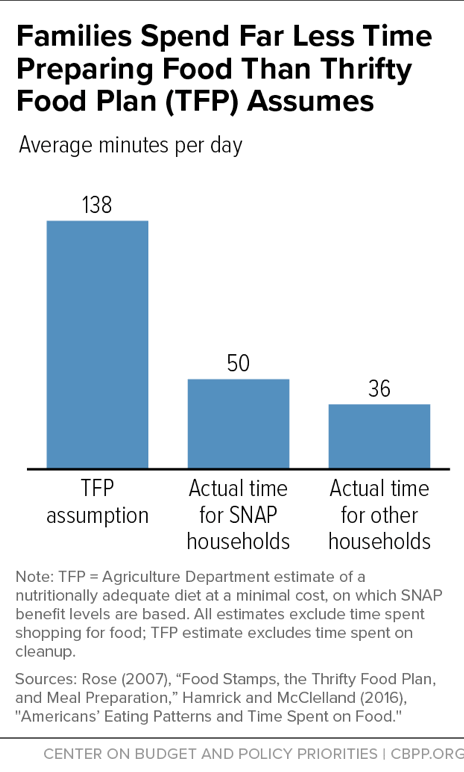BEYOND THE NUMBERS
SNAP (food stamp) benefits fall short of what many participants need to buy food and prepare a healthy diet, our new paper and policy brief explain. Additional benefits would increase families’ food spending and improve food security.
As we’ve written, SNAP helps millions of low-income families and individuals put food on the table and it lays a critical foundation for their health and well-being, lifting millions out of poverty and improving food security. But its benefits are modest — less than $1.40 per person per meal, on average — and roughly half of participating households are still food insecure, meaning they lack consistent access to enough food to support an active, healthy life.
SNAP’s benefit inadequacy partly reflects the underlying assumptions in the Thrifty Food Plan (TFP) — the Agriculture Department’s (USDA) estimate of a minimal-cost, nutritionally adequate diet — which is the basis for SNAP benefit levels.
- To meet dietary recommendations at a low cost, the TFP employs assumptions about food consumption that can vary significantly from what people actually consume. The TFP aims to represent the money needed for a low-cost but nutritious diet. USDA’s periodic updates to the TFP since the 1970s all assume that its cost is fixed at existing levels, adjusted for inflation for the foods in the TFP. The TFP also must meet nutrient standards, food group recommendations, and other dietary requirements. These constraints produce food plans that differ — sometimes dramatically — from what low-income people consume. For example, the TFP assumes a household will consume certain foods in quantities up to 20 times the national average and omits other commonly consumed foods, like citrus juices and whole milk.
- SNAP benefit levels don’t account for the time needed to buy food and prepare a healthy diet, assuming unrealistically that households can buy low-cost raw ingredients and prepare most meals from scratch. Preparing a healthy meal requires not just money but also time — to plan menus, travel to and from a grocery store, comparison shop to minimize costs, and prepare meals. The TFP requires low-income households to devote much more time to preparing meals than most households actually have, some studies find (see figure).
Also, while the TFP meets many science-based nutritional recommendations, it falls short of nutritional guidelines for vitamin E, potassium, and sodium. Moreover, it doesn’t account for a range of dietary restrictions, and it doesn’t cover medically necessary dietary needs for relatively common conditions like lactose intolerance or diabetes.
For many participants, raising SNAP benefits would increase food spending, improve food security, and help families afford nutritious food for more days of the month, this evidence shows, and it could contribute to other positive outcomes, such as improved health.

